We're thrilled to share that Almabuena Films' director and founder, Alma Tabernero, was recently interviewed by Jack Brindelli from Indy Film Library for their podcast, Tube Rats! In the episode, Alma discussed her short documentary 'Women on a Roll,' which will be featured in Indy Film Library's 2023 showcase at Filmhuis Cavia in Amsterdam.
During the podcast, Alma and Jack delved into various topics, including career changes, Arctic expeditions, and the importance of urban sports for the communities of Amsterdam. It was an exciting conversation filled with insights and behind-the-scenes anecdotes about Alma's work.
You can listen to the podcast on Spotify and make sure to grab your tickets for the screening to catch 'Women on a Roll' at the Indy Film Library 2023 film festival on the 29th of April. Don't miss this opportunity to hear from Alma Tabernero herself and experience her inspiring documentary on the big screen.
We had a great time chatting with Jack and are grateful for the opportunity to share Alma's story and work with the Indy Film Library audience. See you on the 29th of April!
The team from DesignRush approached us to create a profile in their extensive database of agencies around the World. We hope to be reached by clients all over the World who want to develop their projects in Amsterdam (with a Spanish accent).
If you happen to be one of the brands we have already worked with, like Vio.com, Adevinta, Quatt or Twitch, review your experience with us on DesignRush!
Also, don´t miss out on their Spotlight section, which features interviews with industry proffesionals, tips and trends.
At Almabuena Films we believe that films are meant to be shown. Especially in a movie theater, but any channel can potentially be suitable to showcase your work. One of the channels where our films are displayed is our website. For us, it was quite important to find a company that understood how to make websites that are both attractive to the eyes of our audience and to the bots of search engines. We contacted Volcanic Internet and trusted its all-around team to help us on our mission to showcase our work properly.
In order to set the project in motion, we needed to communicate the basis of our brand and our requirements in a structured manner, so the Volcanic Team could work their magic. We put together a deck with visual references and links to other websites. This made us ask questions to ourselves about our brand and our vision, like, for instance:
- What is the personality of Almabuena Films?
- Looking for references on competitors' websites, what do they have in common? Why do we like them? What we would do differently?
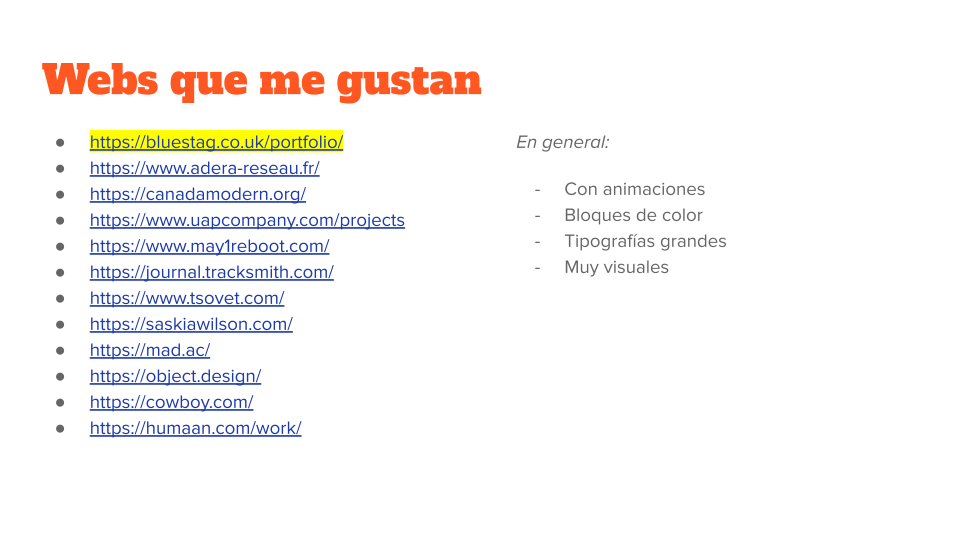
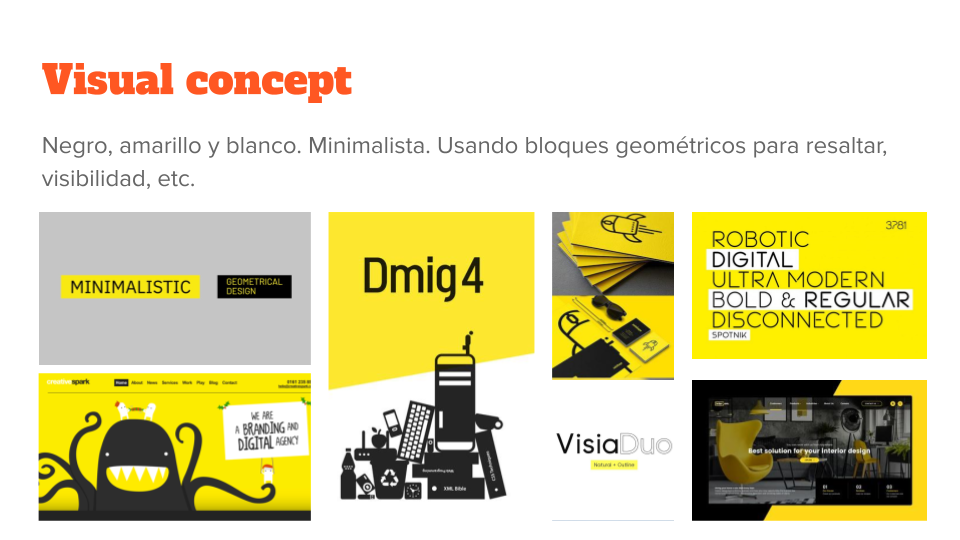
However, before contacting them, we took the most important step in this process: defining the purpose of the website, and from every page. This will help you make decisions, and also know which content you should include. Let's take as an example the home that collects all of our Projects. As mentioned, for us important to show by doing, and we thought that the best way to list our capabilities as a production company was to gather all our projects and assign them Categories and Sub-categories, which in fact are our services. We also defined the kind of information that this page should include, and the possibility to filter by Categories.
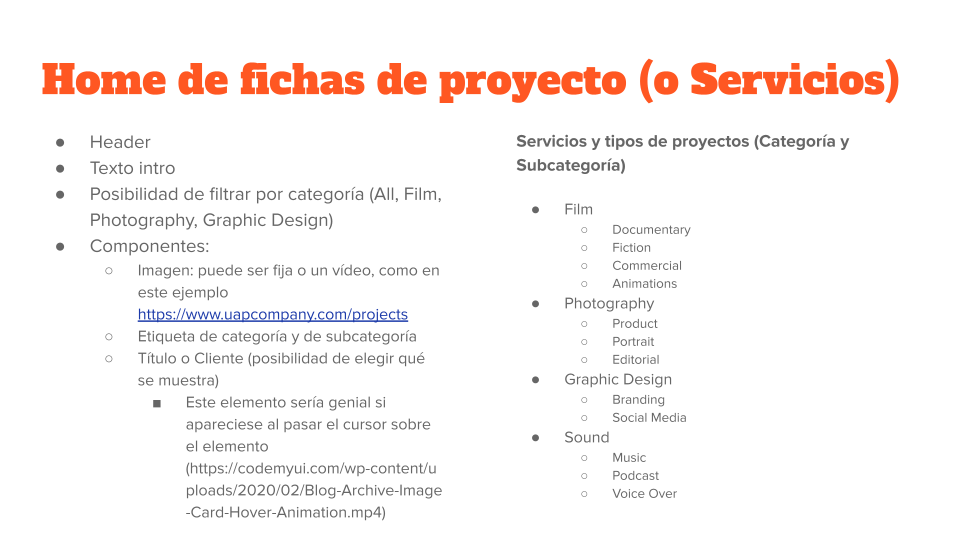
The challenge for Volcanic was to fit all that info and requirements and make it attractive and readable. Since we already made our homework and reviewed other websites to find features that were appealing to us, we were even able to put together a simple draft of the structure of every page (also called a wireframe).
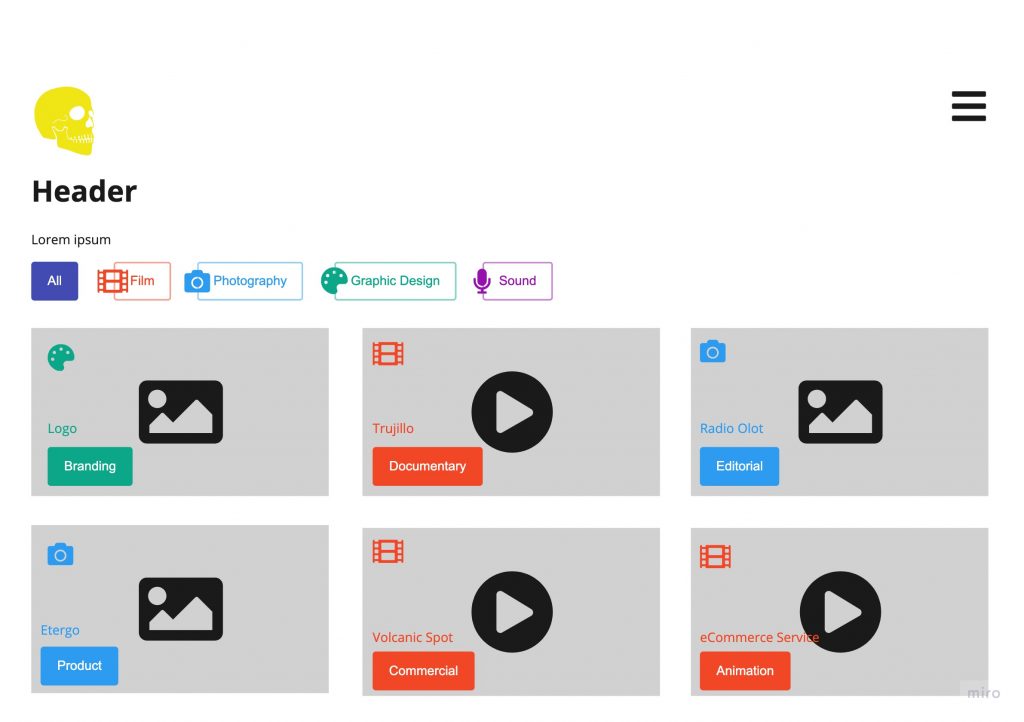
We repeated this process with every page we needed. It was a great exercise for us to understand our brand better and find out what was aligned with it. With all these inputs we were able to create a sitemap, which is a table of contents from your website. Defining this is key for users (and bots) to find what they are looking for.
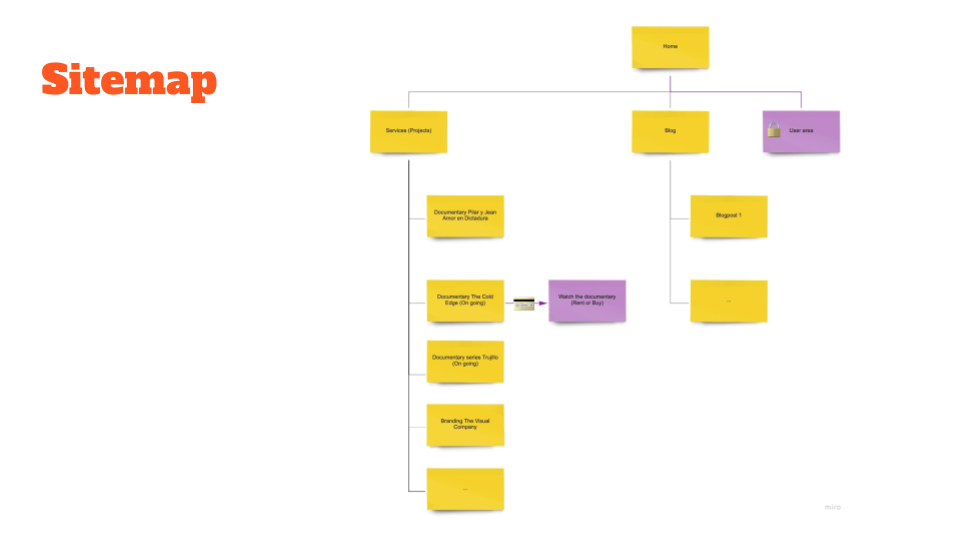
We were lucky enough to have Almu Tabernero on the team, which used to be a project manager and knows her way through web development. If you don't count on an "Almu" in your team, then you need to find a specialist. Somebody who can advise you on how to transform your needs into a website that converts, and that can help you make the right choices. And more importantly, somebody who can translate the technical jargon into a language you can understand. In our case, we were already collaborating with Volcanic as content creators and our communication was very good, so it was a no-brainer.
Volcanic is a company that operates very well remotely. Even before The Pandemic, the team was working efficiently from several countries in the World. They use Asana as their project management tool for the last 10 years, and that allows them to have a better overview and control of the projects they are managing. That also helps with establishing a more effective communication channel.
Our first kick-off meeting was a video call between The Netherlands, the UK - where their designer, Carla Costa, lives- and Spain -with the technical team. After everyone understood what was needed and what to expect, Carla started working on the first designs. Soon after that, we received a link to Sketch to review the pages and add our feedback. It was exactly what we expected and there were very few comments on the work from Carla.
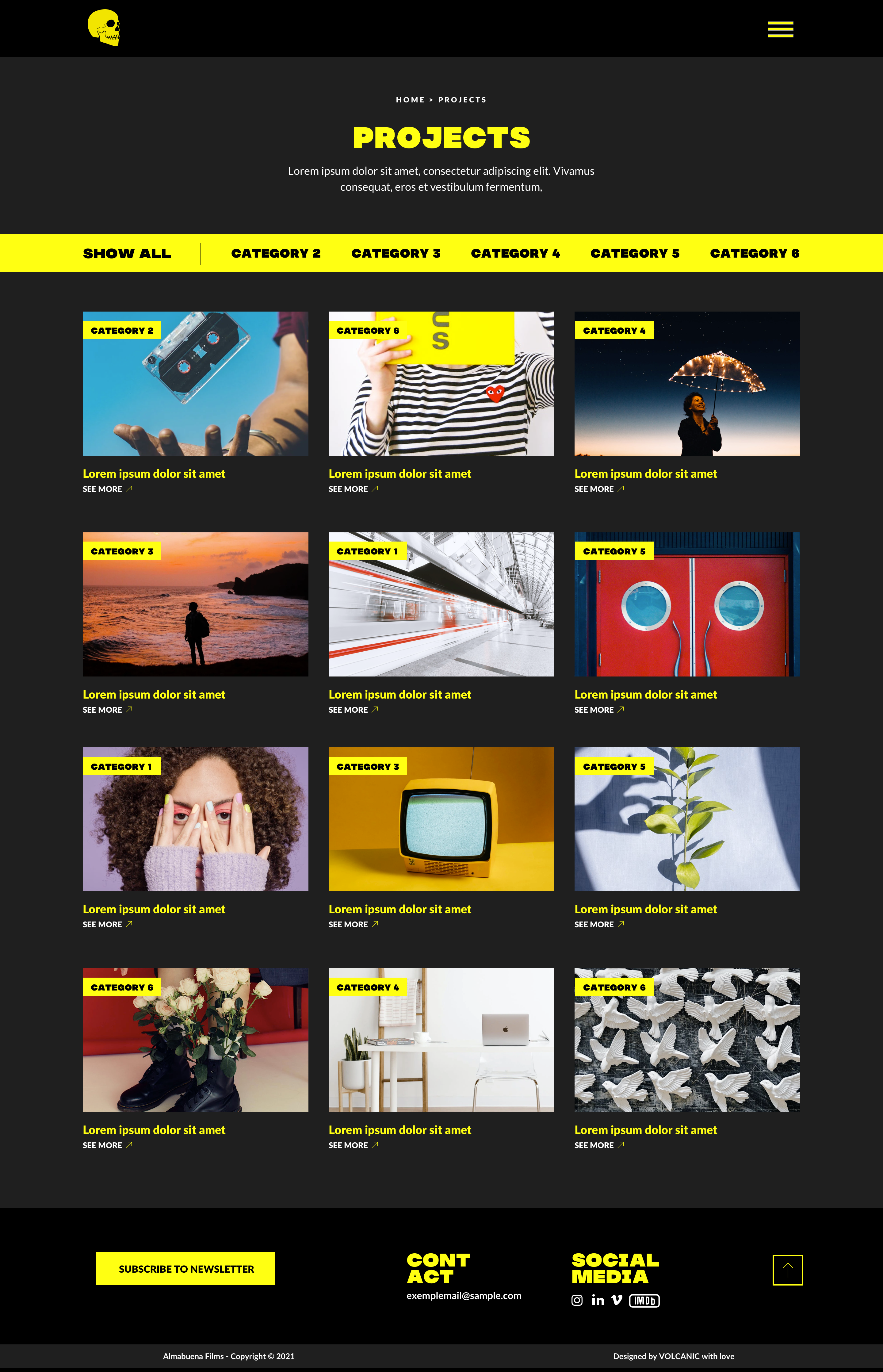
Once all the designs were approved by us, the developers started building the pages on WordPress. We chose this platform for many reasons, being the main one its easy interface for content management. Updating any page, changing any picture, or adding a new project shouldn't be a painless experience. Coordinated by Albert Torres, the project manager for this project, the team put together our website. We were able to try each page, and add our own content as a test, both on desktop and on our phones. The team worked to solve some minor bugs. Then, our website was ready to be launched in May this year. After several months of uploading content to the web, we couldn't be happier with the result and with our choice to trust in Volcanic.
When you're starting a new project, thinking about what lenses to use is very important. It defines the look and feel of a project, but also needs to be practical and let's be honest, it needs to fit in the budget.
Women on a Roll is a documentary about roller skaters, so I knew there was going to be a lot of movement and unpredictable things happening that I didn't want to miss. Since we were a small documentary crew, I needed lenses that would give me flexibility. This meant that I needed lenses that could zoom quickly, from a wide to a long shot, and preferably stayed in focus when I zoomed in or out. Only so-called parfocal lenses can do that and they are usually not cheap.
''A parfocal lens system is a lens that maintains its focus despite changes in the lenses focal length or magnification. This enables cinematographers to zoom in and out from a subject while maintaining the same focus.''
- Studiobinder
Angenieux is a French company which has been making cinema zoom lenses for more than a 100 years and they have even travelled to Space. Since I had the privilege to work with some of them on other projects I immediately thought about them when choosing lenses for the project.
Something that was a bit limiting in choosing the right zoom lenses was the fact that the camera that we used, a Panasonic EVA1, has a EF-mount on the body. Most professional lenses use PL-mount, so there wasn’t that much to choose from. Luckily, at Angenieux they have thought about that issue.
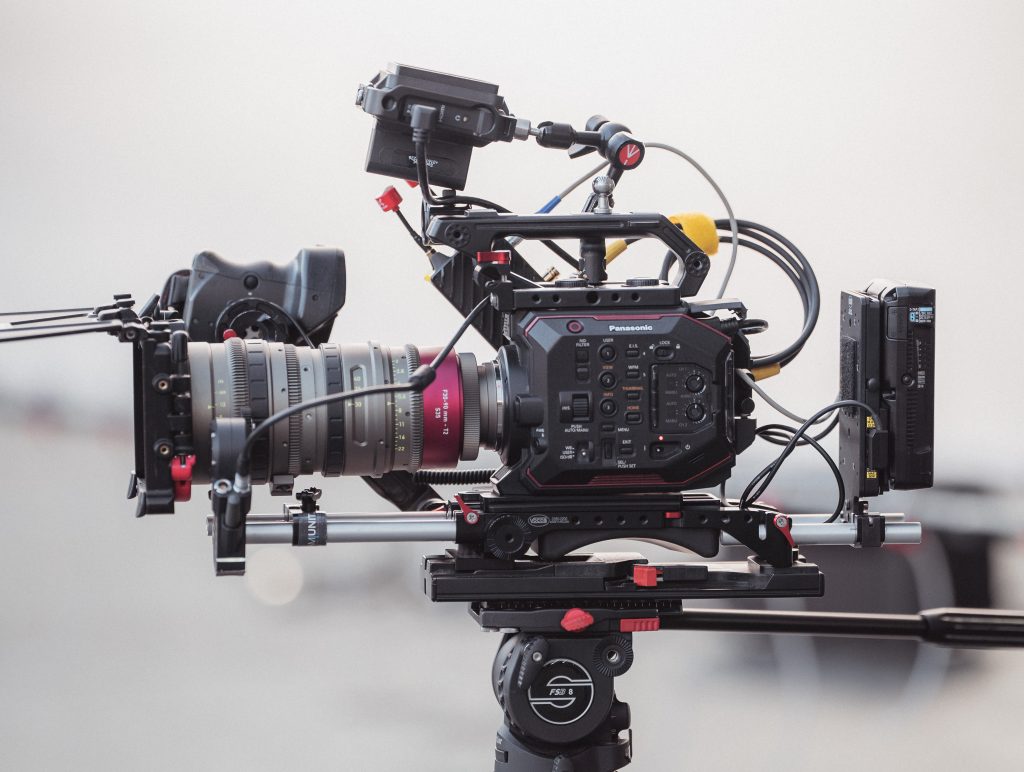
The Angenieux EZ-1 and EZ-2 were the best choice for this project. They have the capability to change lens mount between PL and EF very quickly, by simply screwing it on the back and replacing it with the mount that you need. The EZ-2 has a 15-40mm range which is perfect for wide and medium shots and the EZ-1 has a range of 30-90mm, which is fantastic for medium to close shots. All at a T-stop of T2 continuously, which is very nice for low-light conditions and creating soft look images. So far the practical side of these lenses.
Another thing that is important, is of course what the image looks like through a lens. Angenieux is a French lens company that has been around for a very long time and is especially known for high-end zoom lenses.
The EZ-1 and EZ-2 are very sharp, yet soft enough to give a more romantic image or look, something I think was a very good choice for this particular subject. To make things extra dreamy we put a Photo prism in front of the lens. This made the edge of frame a bit more blurred and reflected the background of the set a bit. Mirrors and reflections are in fact an important subject inside the narrative of the documentary.
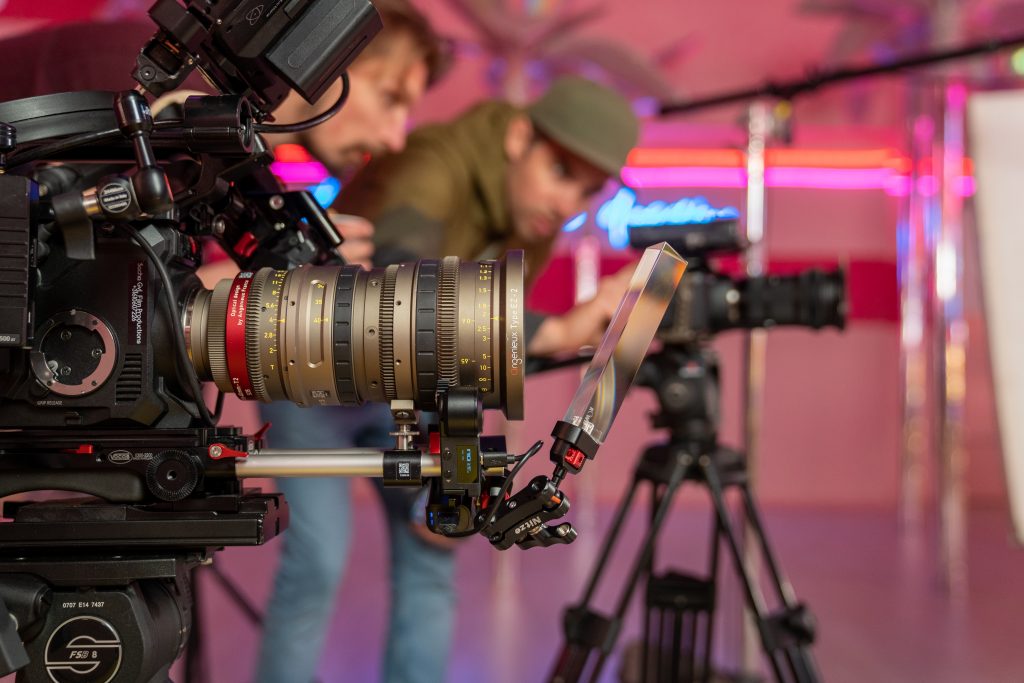
For one particular shot we used a Samyang 10mm lens, which is extremely wide, but looked amazing in the enormous wide Hall 1 of the RAI. The curved roof of the hall looked extra warped, which exaggerated the size of the place and made our skater looking very small from afar, but very big when she stood close to the camera.
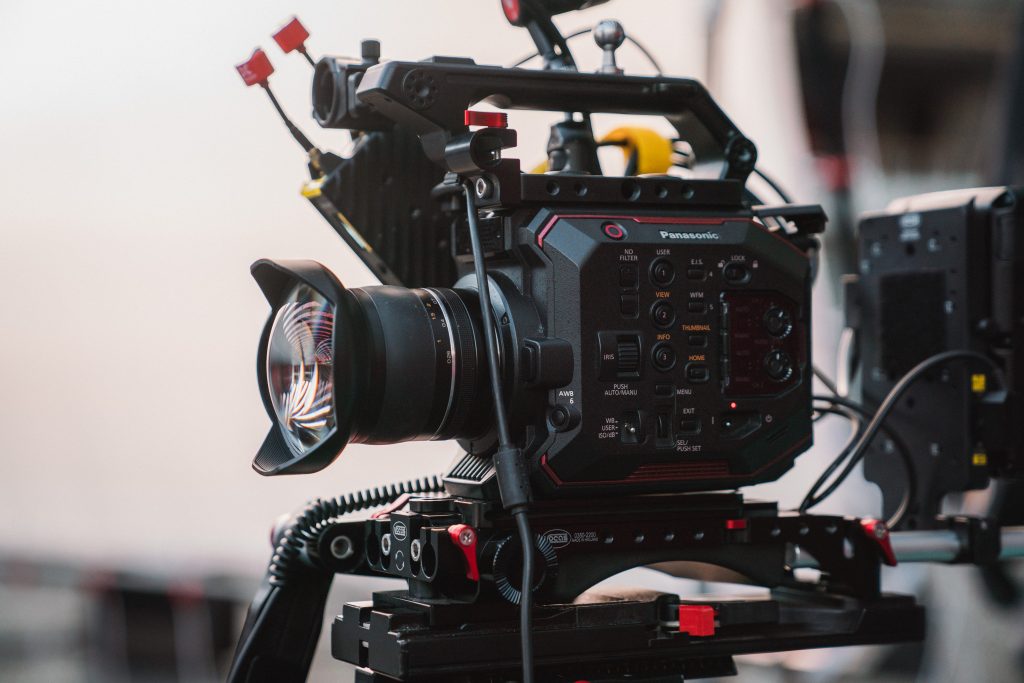
People usually think that a documentary needs to represent reality, but that does not mean that everything has to be kept the way it is. As a cinematographer you need to understand how light works and how to make use of the already existing light that you have available on set. We tried to go for a naturalistic look, but that doesn't mean we didn't use any artificial lights.
The first thing I do before setting up any light is to have a look at what is already there. Are there any windows, is it a sunny or cloudy day and in the case of the Roller Dreams location, which lights are there already and can I control them? Usually I check all these things when going on a location visit or recce, to make an assessment of what the production needs. Next I will make a lighting plan, talk to the gaffer (head of lighting department) to see if they agree or have other ideas and then call up a rental place (in this case Light Unit in Amsterdam) to see if everything is available for the specific shooting date.
For most of the interviews we did for Women on a Roll we used the natural light that was available in the location and the Aputure LS 300x with the Light Dome II to create a very nice soft fill and eye-light. What is nice about this particular light is the fact that it is dimmable, it has the function to change color temperature and it is LED, which makes it a very versatile tool. I can quickly change the output and color to adapt to any situation. Sometimes it is better to match the color of a light to the surrounding lights and sometimes I do the opposite to create a color contrast between the foreground and the background.
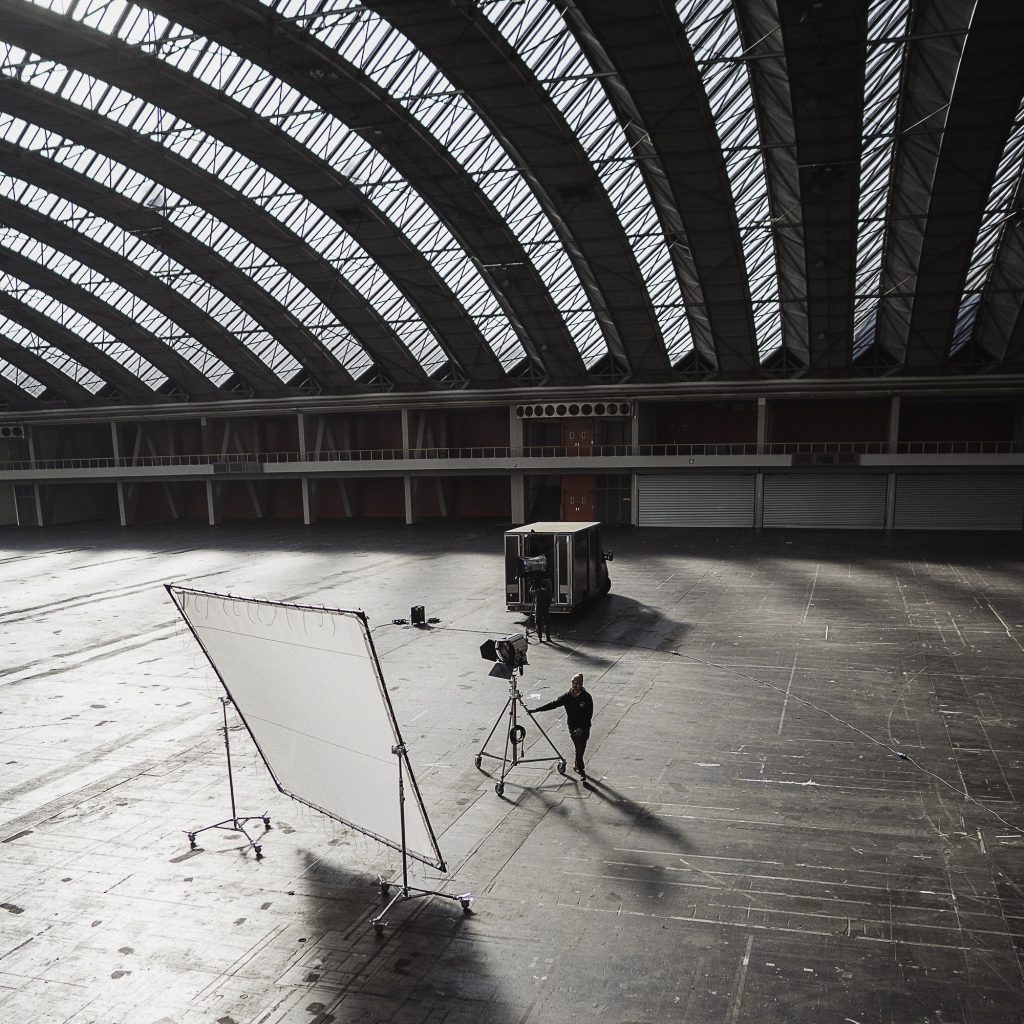
In the enormous RAI hall 1 location, it would be impossible to control the light coming in, since the roof is full of windows and so is the entire front side of the building. Having that in mind, it would take a really strong light to compete with the strong sunlight we had on the day of filming. The location provided us with 32 Amp power connection which is more then enough for a Arri M40 HMI, which creates a strong daylight (5600K) beam of light. Strong enough to diffuse the light by shining it through a 4x4 meters grid cloth, which is a basically a large sail which makes the light very nice and soft to light the talent. Another thing we did was to create a little twinkle in our interviewee's eyes was to put an Arri Skypanel S60-c with softbox and grid much closer to her, almost straight ahead. This also helped us to battle the strong sunlight that was coming from above, which was also a natural backlight for the talent. The only thing we did do was putting up a diffusion screen on a very high tripod to soften the sunlight hitting the back of her head.
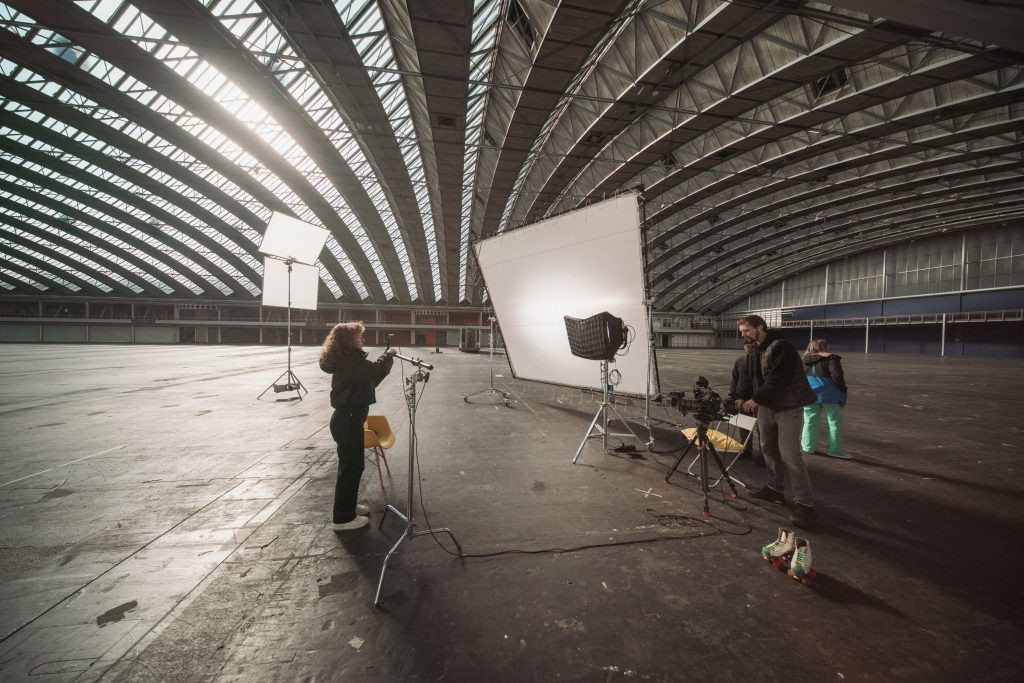
During the skating part in the RAI hall 1, we attached the Aputure LS 300x to the camera cart. This was possible because the Aputure lights can run on V-lock batteries so we could move freely without any cables attached. It gave a hint of light when the skater was close to us, but mostly she was lit by the sunlight coming in through the windows, which already looked beautiful.
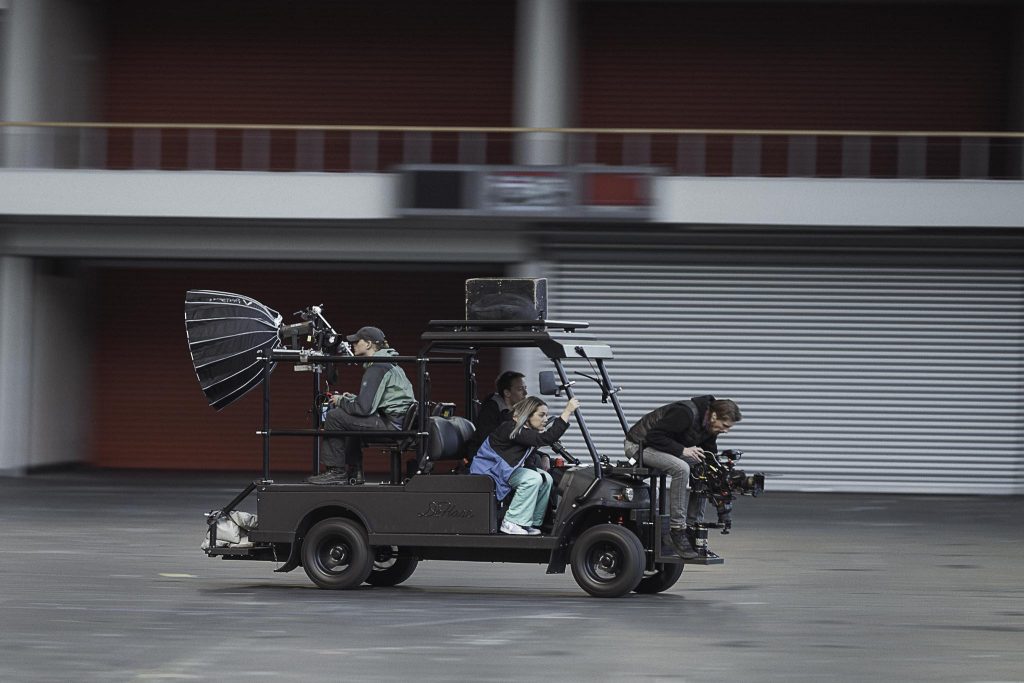
In Roller Dreams they already had a beautiful lighting setup, which gave a real rollerdisco feeling. Why change things when it’s almost already perfect. We added only a Aputure 600X with the F10 Fresnel lens which we controlled ourselves to complement the existing party lights. We wanted to create a bit more of a theatershow feeling, by having a spotlight that kept gliding in and out of the shot (operated by the gaffer). This gives nice transitions between dark and light and makes more dynamic when the light is in the shot rather than keeping a light stationary.
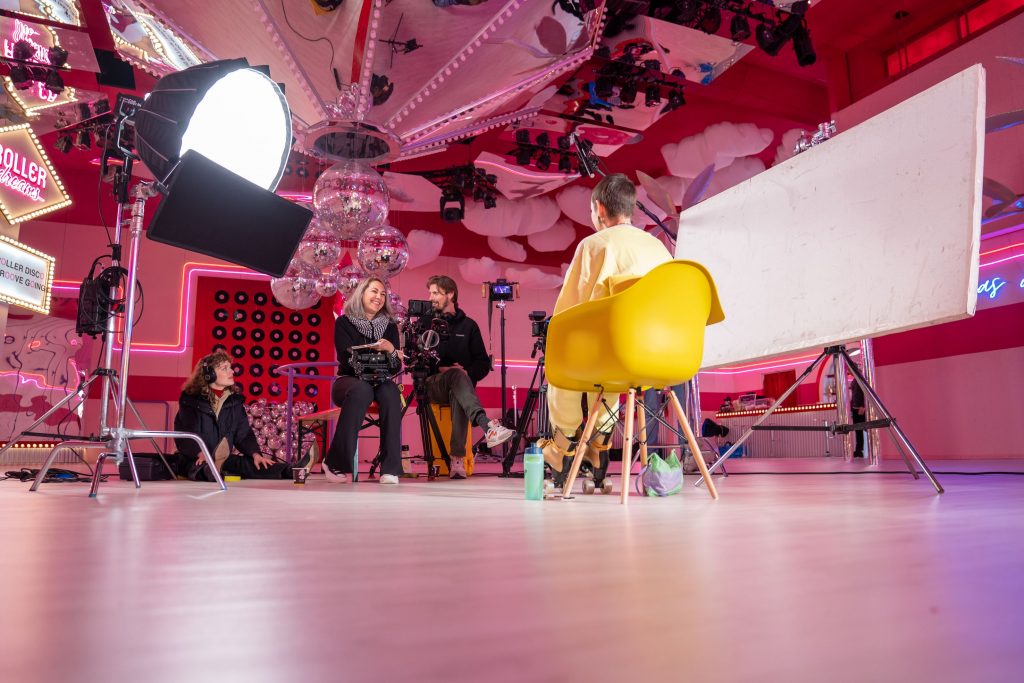
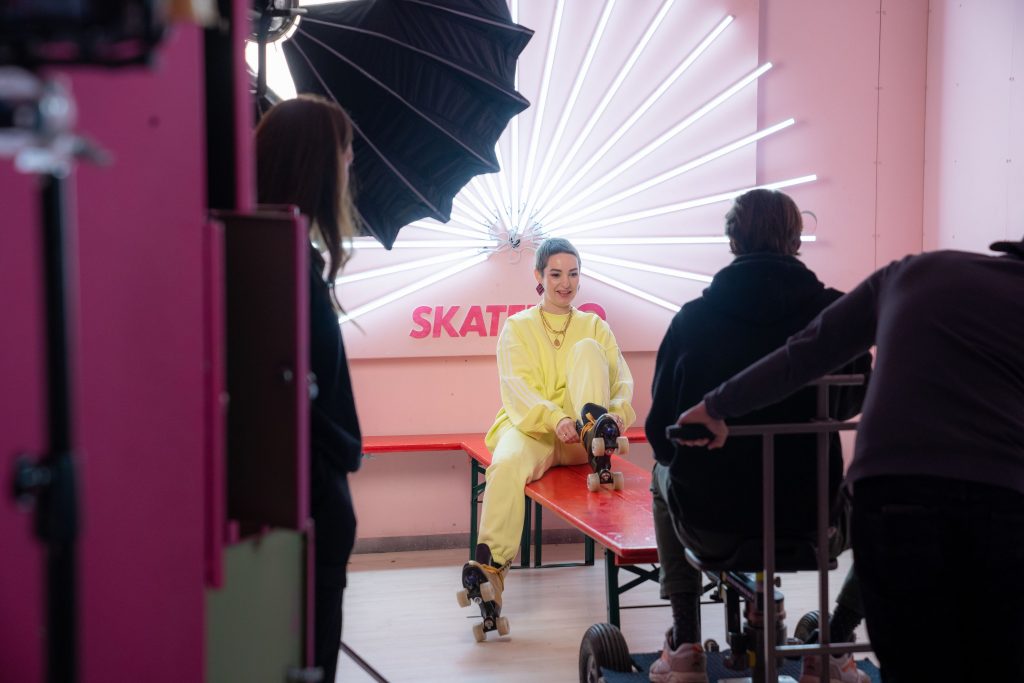
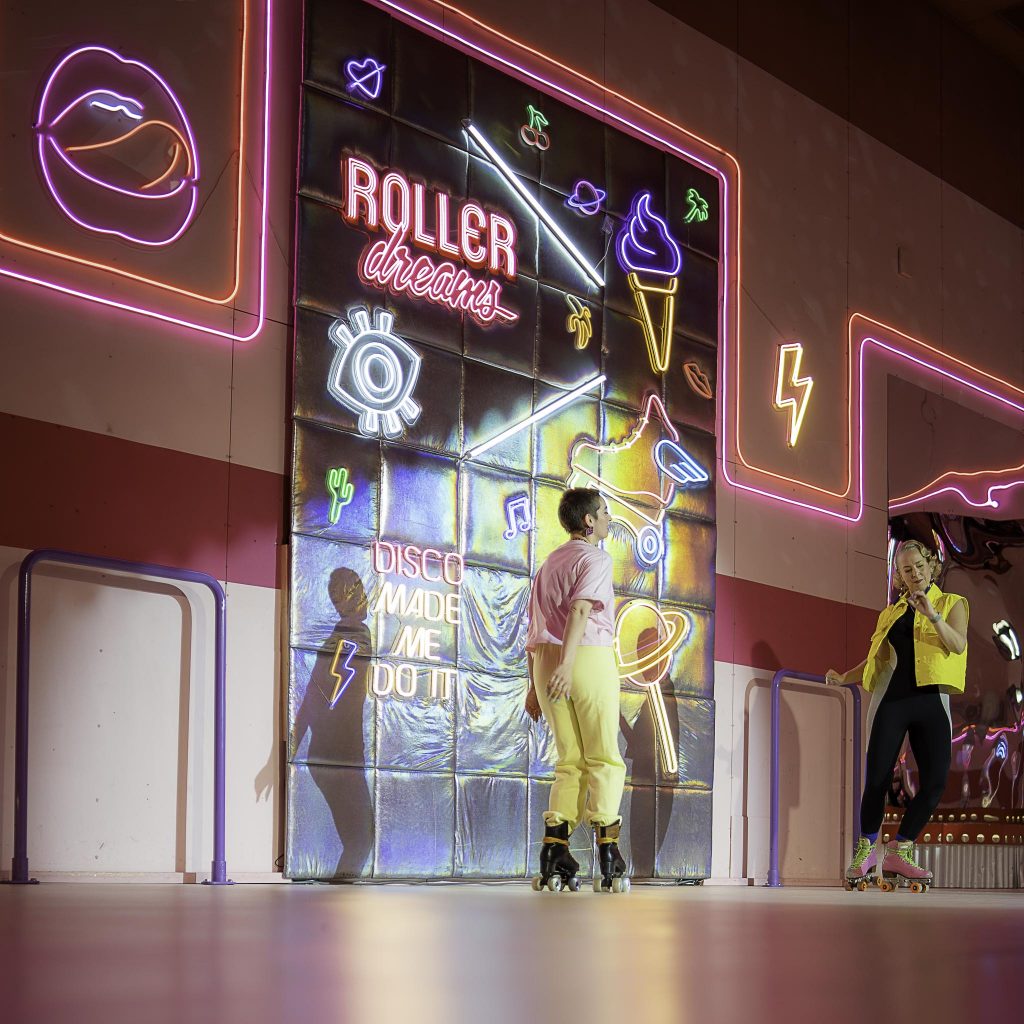
In general you will always want to control every light and add your own to have full control, but if you are working with a small budget, like we were on this project, it is good to know that with existing and a one or two simple lights and or bounce you can create beautiful lit shots.
Download here the promotional images:
Text:
Be a part of a documentary about the roller skating culture of Amsterdam through the eyes of female skaters. Starting from 11€, you can get one of the perks, and even have your name (or the name of your brand) inside the film. Learn more about the crowdfunding campaign at Voordekunst.nl, by searching for the project "Women on a Roll". Your help is needed to make this project possible!
Tags:
Production company @almabuenafilms
Director @almafilma
DOP and Cameraman @sachajonathandop
Kari Anne Bakker @karianneskatedance
Skatedance Amsterdam @skatedanceams
BTS Photographer @hexashots
Voordekunst @Voordekunst
Hashtags:
#womenonaroll #voordekunst #maakhetsamen #rollerskating #quadskates #documentary #amsterdam #mokum #damko #skatelife #8wheels #skategirl #rollerskate #rollerderby #rollerdance #parkskate #spreadthestoke #danceskate #womenwhorollerskate
The main premise of the documentary Women on a Roll is that women feel free when they are roller skating. This is something that our director Alma Tabernero experienced herself, and she felt the urge to recreate that on the screen, through the eyes of other female skaters. For us, it was key to showcase what these women experience while they are on their roller skates. All the decisions we would take during the process of the movie needed to serve that purpose. But how do you film the feeling of freedom? Let’s hear from the Director of Photography, Sacha Glastra van Loon, how he approached the project.
I think the most important thing is to give the person we are filming the space to do what they need to do. At the same time as a cinematographer you want to get as close to the subject as you can, so we as a viewer (literally) feel closer to someone. These two things conflict with each other so you have to think about how to get closer, without invading the space of the talent. The first thing that was important for us was the ability to move along or around the skaters. There are multiple ways to achieve this, but since we are on a budget we had to think smart.
At first we did a test shoot where I was on skates with a small gimbal and I tried to follow the skater, but we quickly found out that it was very hard to keep good framing while skating at the same time. It would be too inefficient for the short time that we had with each talent and on top of that we wanted to use a more professional camera (Panasonic EVA1), which is a lot heavier when you put all the bells and whistles on it. So then it was decided that the camera also had to be on wheels. For the locations at Roller Dreams and the Eye film museum we chose to use a Matador doorway dolly on air tyres, because the floor was flat and smooth enough to use it without laying down tracks for each shot. It also gave us more freedom to move quickly.
We only used the tracks for one setup to achieve a specific shot where we were very low to the ground and moving in a half circle around the skater. The dolly gives the camera operator a solid and smooth base to make nicely framed shots from the creative and sometimes unpredictable movements of the skaters.
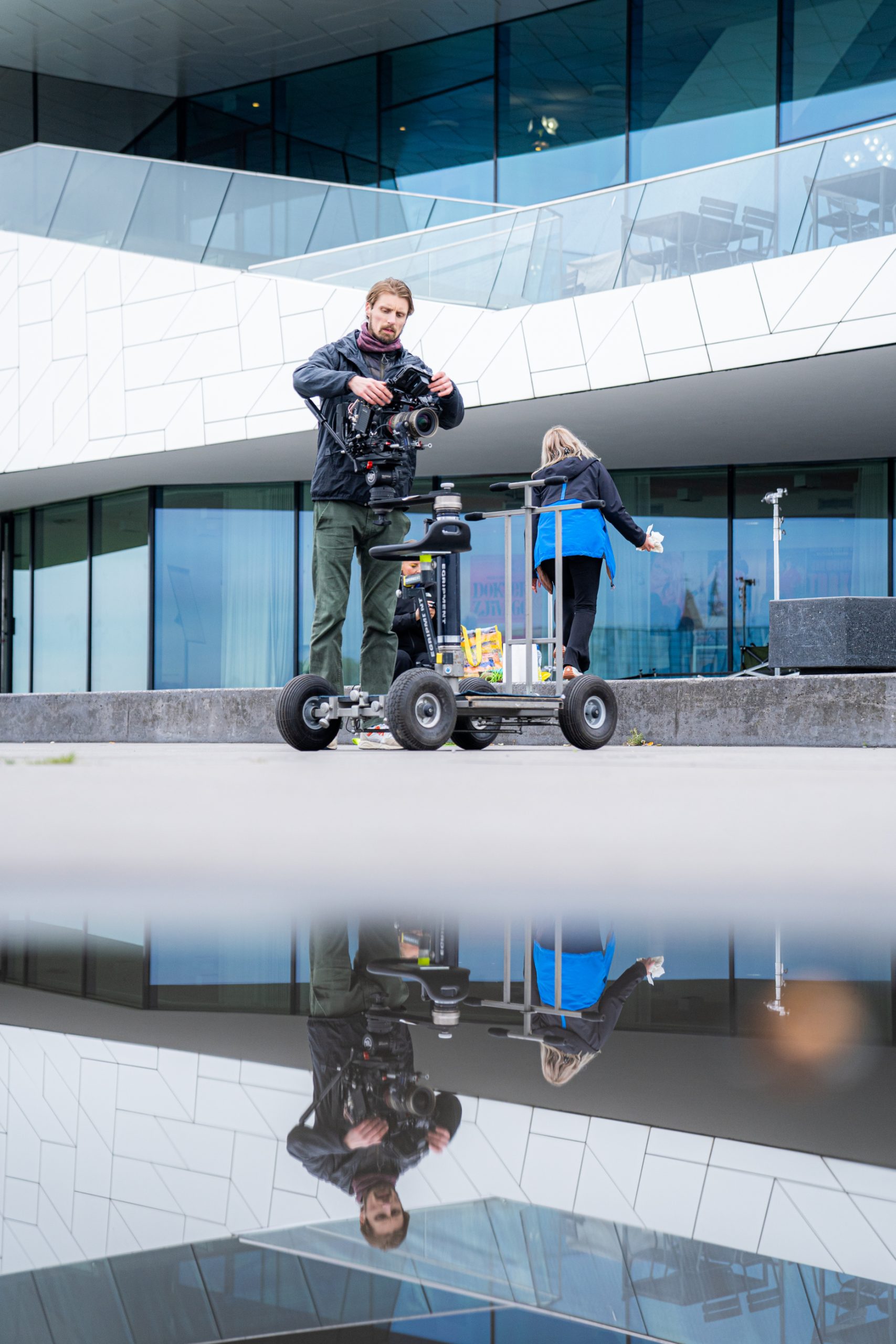
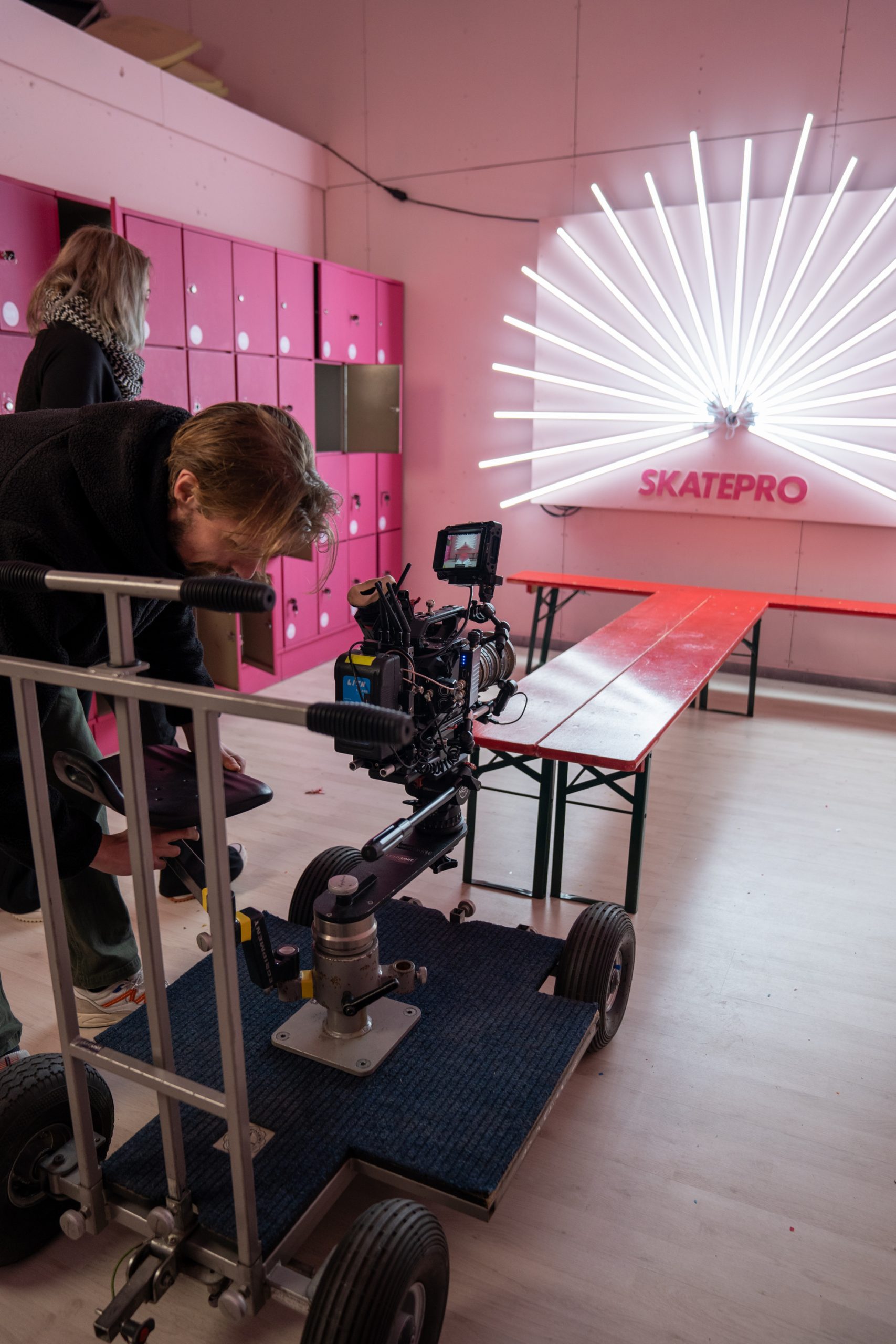
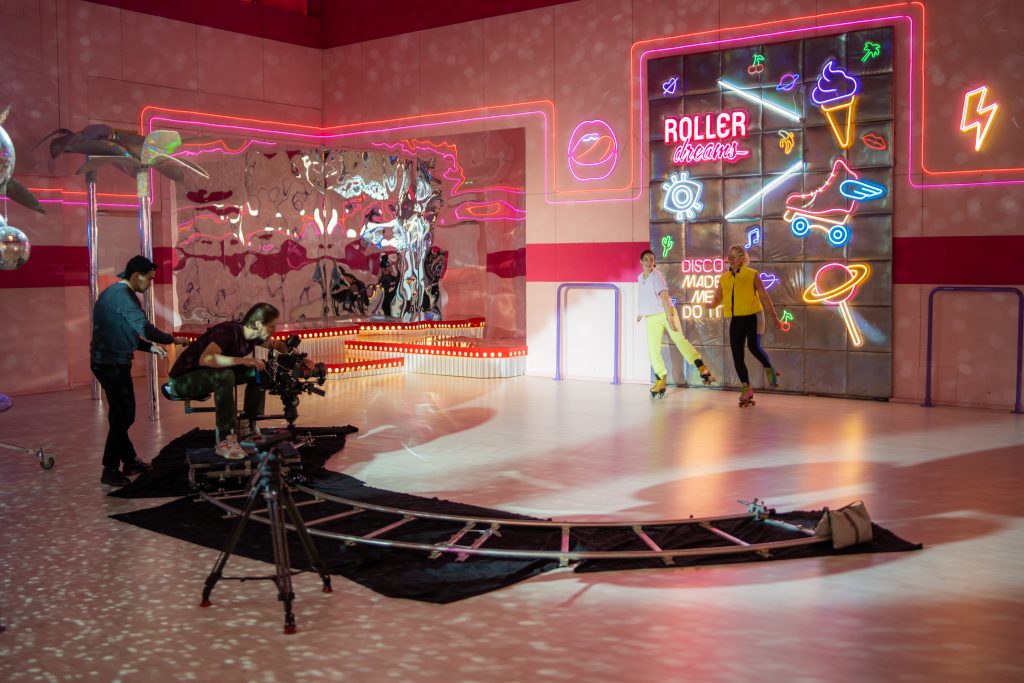
For the shoot with the women of Head Over Wheels I made the camera as light as possible so it would fit in a DJI Ronin and then combined it with a harness from Proaim including the Flycam Flowline Placid Two Axis Spring Arm. It gave me the freedom to walk all through the space and around the skaters and create smooth, floating shots. The reason why we didn’t use this for the whole shoot is because it only works with a really wide lens with a closed aperture and since we didn’t have the luxury to have a 1st Assistant Camera, who can keep the focus that day.
The location of the RAI hall 1 was very special, because it’s a huge building which was completely empty and we wanted to make use of that immense space. For this we needed some more professional help, so we arranged a grip (Jelle van der Weide, from Gripwise), who came with an electric golf camera car. The camera operator could sit on the back as well as on the front of the car which gave a unique angle, since we could now keep up throughout the complete space of the RAI. It was amazing to be able to keep up with Renda, who was skating at full speed while doing her moves."
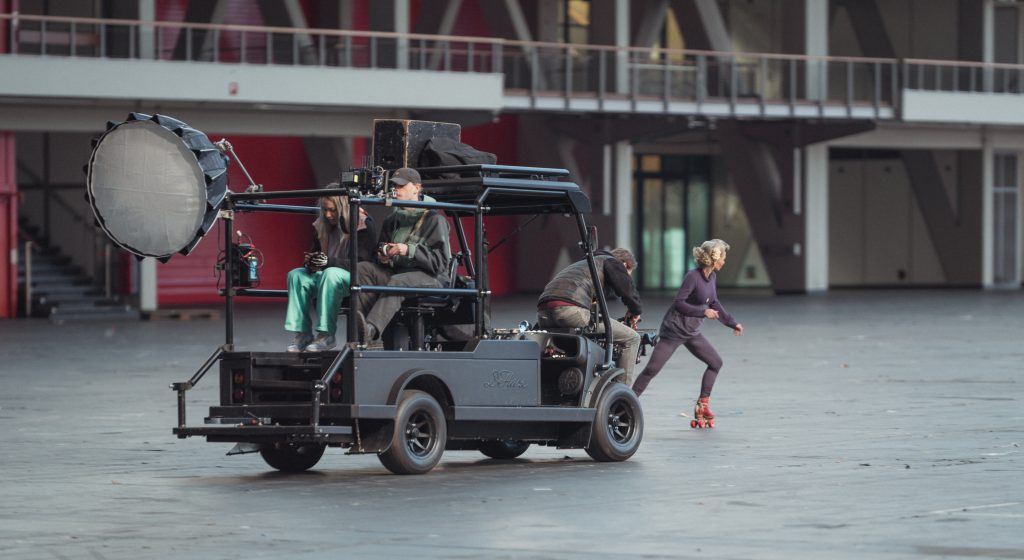
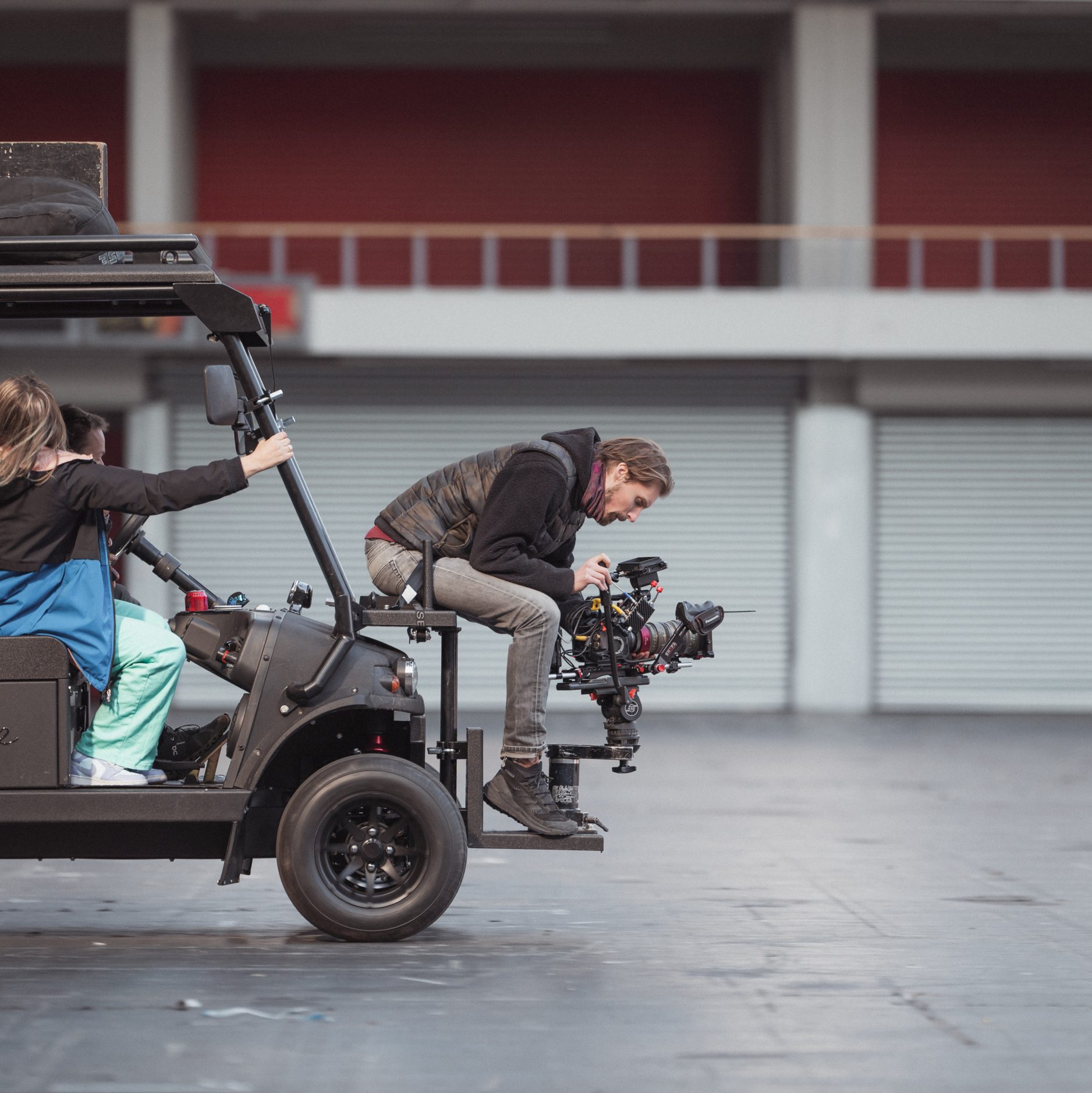
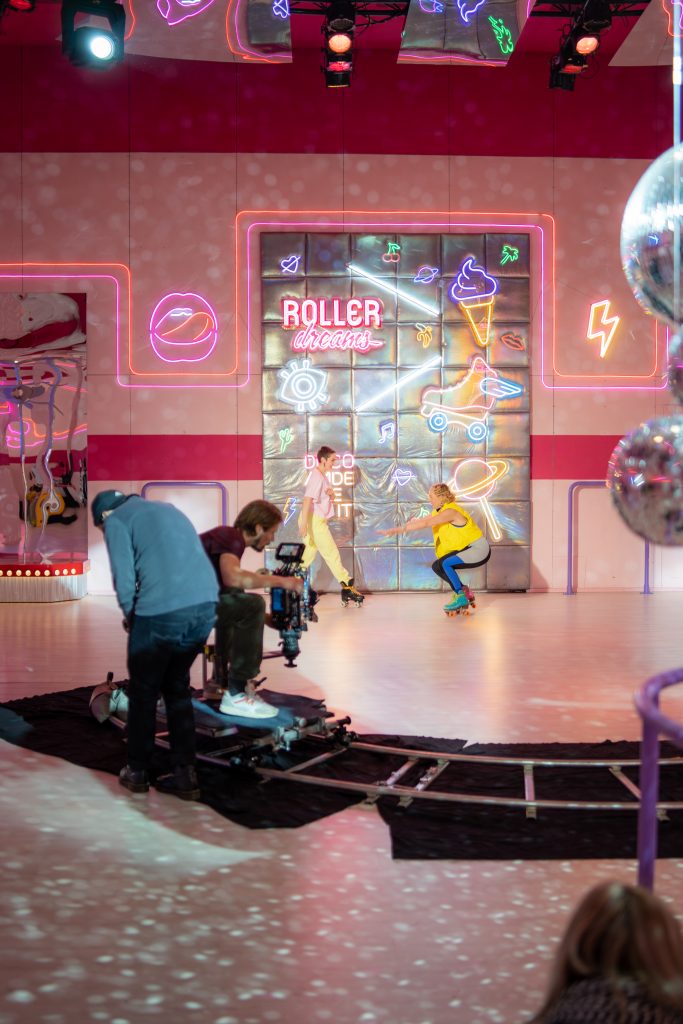
Contact our expert Sacha Glastra van Loon and he will advise you on the best solution.
Or send us a message with your project idea!
Find below our latest press releases:
Download our logos with a transparent background:
For further information, you can contact us.
We are AlmabuenA Films, a documentary-focused production company based in Amsterdam, but with a Spanish accent.
Our first production was the documentary "LOVE IN DICTATORSHIP. The tragic story of Pilar and Jean". This collaboration with Stella Prods, a Spanish production company, reached almost 200.000 views on YouTube.
You can read more about this project on its detail page.
Or you can also find which other works are keeping us busy. We have a newsletter where we share updates on our ongoing productions.
Hopefully, this is enough to get you inspired to contact us to talk about your idea.
Talk to you soon!
- AlmabuenA Films